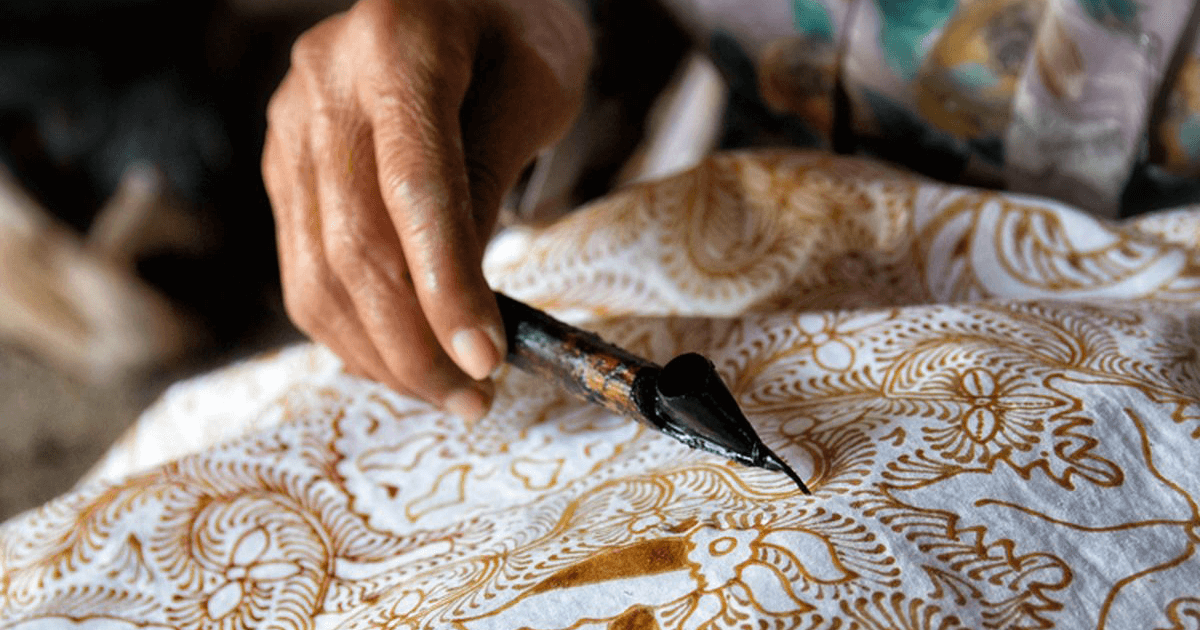Immerse yourself in the vibrant world of batik, a captivating textile art form known for its intricate patterns and rich colors. This extraordinary craft, which weaves together centuries of cultural heritage and artistic brilliance, is a living testament to the creativity and traditions of diverse cultures.
The Origins of Batik
The term “batik” is derived from the Javanese word “tik,” which means to dot or to make dots. While the exact origins of batik are difficult to ascertain, it is widely accepted that the batik-making techniques were first refined in Indonesia, particularly on the island of Java. Historical records suggest that batik was being crafted as early as the 4th century BC.
The Batik-Making Process
The creation of batik is a meticulous and labor-intensive process involving the application of wax-resistant dye to fabric. The traditional method, known as “batik tulis,” entails drawing intricate designs with a canting, a small tool that dispenses hot wax. This wax serves as a resist, preventing the dye from penetrating certain areas of the fabric. The process is repeated multiple times with different colors to produce complex, multi-layered designs.
Cultural Significance of Batik
Batik holds immense cultural significance in many countries, particularly in Indonesia, Malaysia, Sri Lanka, and parts of Africa. Each region boasts unique styles, motifs, and symbolic meanings associated with batik patterns.
Indonesia
In Indonesia, batik transcends mere fabric, embodying cultural identity and national pride. In 2009, UNESCO recognized Indonesian batik as a Masterpiece of Oral and Intangible Heritage of Humanity. Traditional Javanese batik patterns often carry symbolic meanings, with specific designs reserved for royalty and special occasions. For instance, the “Parang” motif symbolizes strength and resilience, while the “Kawung” pattern represents wisdom and justice.
Africa
In Africa, batik has a storied history and is an integral part of traditional attire in several countries, including Nigeria, Ghana, and Senegal. African batik is renowned for its bold and vibrant designs, often featuring symbolic and spiritual motifs. The fabrics are utilized for various purposes, including clothing, ceremonial garments, and home decor.
Sri Lanka
Introduced during the Dutch colonial era, Sri Lankan batik has developed its unique style, merging traditional and contemporary elements. Known for its bold and vibrant designs, Sri Lankan batik often depicts scenes from nature and religious motifs. The town of Matale is particularly renowned for its batik artisans, who continue to innovate while preserving the traditional techniques.
In Sri Lanka, batik is more than just a fabric; it’s an embodiment of the island’s rich cultural heritage. The meticulous craftsmanship and vibrant colors of Sri Lankan batik reflect the country’s artistic traditions and natural beauty. Each piece tells a story, capturing the essence of Sri Lanka’s cultural diversity and history.
Modern Influence and Global Appeal
Batik has transcended its traditional roots, garnering popularity and recognition on the global stage. Contemporary fashion designers and artists have embraced batik, incorporating its patterns and techniques into modern clothing, accessories, and art. This fusion of traditional and modern elements has helped preserve and promote batik as a living art form.
Embrace the Heritage of Batik with Akira
The history and cultural significance of batik are a testament to its timeless beauty and relevance. From its ancient origins to its global influence today, batik continues to captivate and inspire. By supporting and wearing batik, we celebrate a remarkable art form and contribute to preserving the cultural traditions and livelihoods of artisans around the world.
Discover our exquisite collection of batik and handloom fabrics at Akira, your premier Sri Lankan fashion store. Embrace the elegance and cultural richness of this extraordinary craft. Shop at Akira and let your wardrobe reflect the timeless heritage and artistry of batik.

